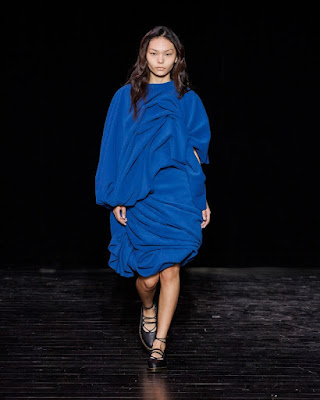The Salvation Army’s trading arm, Salvation Army Trading Company Ltd (SATCoL), is a leader in driving positive social and environmental impact. With a longstanding commitment to reuse and recycling, SATCoL operates a nationwide network of charity shops, donation centers, and clothing banks, working alongside community groups, businesses, local authorities, schools, and individuals—all united by a shared mission to help others and protect the planet.
Partnering with brands and retailers, SATCoL accepts excess, returned, and end-of-line stock of clothing and home goods, reselling them in its charity shops across the UK. This collaboration offers brands an opportunity to reduce storage costs, free up warehouse space for new stock, and divert more products away from disposal.
 |
| As a call to action, SATCoL produced a photoshoot with leading fashion industry photographer Camille Sanson and Fashion Stylist Karl Willett. Photo: SATCoL |
By extending the life cycle of these items, SATCoL and its partners contribute to reducing waste and greenhouse gas emissions while raising vital funds for charity. In addition, SATCoL’s investment in modern processing centers and innovative textile recycling technology enables large-scale reuse and recycling solutions never seen before in the UK. The organization also supports businesses in amplifying their sustainability efforts by promoting their partnerships and shared commitment to creating lasting change.
To highlight the impact of corporate donations, SATCoL recently collaborated on a photoshoot with renowned fashion photographer Camille Sanson and stylist Karl Willett, known for his work with celebrities at the Grammy Awards, Met Gala, and Vanity Fair.
Reflecting on the project, Karl Willett shared: "It was a pleasure to be part of the Corporate Donations shoot—a scheme making a tangible impact by diverting everyday items from landfill and championing sustainability."
The campaign showcases the style and potential of second-hand fashion, electronics, and home goods—categories SATCoL is eager to receive. The organization has gained industry-wide recognition for its work in helping brands achieve their sustainability goals and promoting the benefits of second-hand shopping.
Shaunacy Burne, Corporate Partnerships Manager at SATCoL, emphasized the importance of these collaborations: "We are working with businesses to repurpose obsolete, end-of-line, and faulty stock, ensuring these products are reused rather than discarded. Not only do we help brands meet their CSR objectives through sustainable solutions, but the donations we receive are sold in our retail outlets to raise essential funds for our parent charity. We’re actively seeking new partnership opportunities—together, we can significantly reduce waste and keep more items out of landfill. Get in touch; we’d love to hear from you."



















